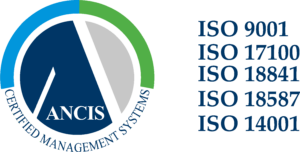Techniques for consistency: alignment
Aligning corresponding texts that are available in different languages can be a valuable resource, particularly for projects that require rigorous consistency with texts previously translated for the same client or official texts. At Intrawelt® we carry out alignments frequently, a task skilfully managed by our project managers. One of the sectors for which this activity is crucial is the pharmaceutical sector. We had a little chat with Elisa, one of our Senior Project Managers and the Coordinator for all pharmaceutical and life sciences projects. In this sector, alignment of official EMA documents (European Medicines Agency), which exist in a whole host of languages, is a precious resource if we want to guarantee conformity with already-published material.
We asked Elisa to answer three simple questions.
Is it possible to align any type of document?
Alignment can only be carried out with parallel texts that are already available in two or more languages. Then, the source and target texts are segmented, which determines the overlap between the two languages. The aligned texts are a valuable reference for the translator, who can use them to maintain uniformity with existing documents and to make translation choices that have already been approved by official institutions or by the client.
Is alignment always reliable?
The alignment’s reliability obviously depends on the quality of the material used, as well as the skills and precision of the person carrying out the alignment. It often is the case that the documents available online or that are provided by the client for an alignment contain typos, grammatical mistakes or even mistranslations and therefore are not of a high enough quality to meet the standards of a language service provider like Intrawelt®. Therefore, it is crucial to be able to trust professional and specialised translators, that have been carefully chosen and are able to use the reference material with a critical eye.
What are the advantages of alignment?
The alignment procedure is particularly useful both for the client and for the professional translator. For the client, cohesion and coherence with already-published material is guaranteed and for the translator, they can manage terminology research in the best way possible.





Leave a Reply
Want to join the discussion?Feel free to contribute!